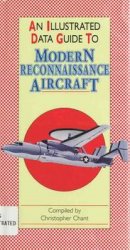Widespread permanent settlements in CA were not established until after groups had been growing crops for several thousand years. Productive agricultural systems capable of supporting permanent villages are found throughout the region dating back to between 4500 and 2500 years ago. By this time, the alignment of the northern sector with Mexico above the Isthmus of Tehuantepec and that of the southern sector with northern South America, give meaning to the concepts of ‘Mesoamerica’ and, perhaps to a lesser extent, the ‘Intermediate Area.’ In the area now designated Mesoamerica, the development of stratified societies first into chiefdoms (see Americas, Central: The Olmec and their Contemporaries) and later into ancient states (see Americas, Central: Classic Period of Mesoamerica, the Maya) occurred relatively rapidly. In contrast, settled village agriculture did not lead immediately to stratified societies in Lower Central America; indeed, in some regions like the western Costa Rican Highlands and the lowlands along the Atlantic coasts of Nicaragua and eastern Panama, the egalitarian nature of these agricultural societies continued right up until contact. Stratified societies or chiefdoms did evolve in a number of Lower Central American regions from Central Honduras through Atlantic Costa Rica to Central Pacific Panama, but this emergence did not follow fast on the heels of the appearance of large permanent settlements. The different cultural trajectories witnessed between the northern and southern sectors of CA almost certainly had their roots in the Late Preceramic Period (c. 6000-3900 BC). Genetic and linguistic divergence among modern Chibchan-speaking populations in Lower Central America both point to a time depth of c. 7000 years for the initial isolation of populations and languages. The cultural boundary between Gran Cocle (Central Panama) and Gran Chiriqui (western Panama/eastern Costa Rica) is clearly identifiable in the archaeological record by 5500 BC (Figure 9).
The emergence of large sedentary agricultural villages is the most obvious indication that a major threshold had been crossed in CA. Other indications include the introduction of well-made ceramics, differential treatment of the dead (specialized cemeteries for social elites situated apart from the villages), the appearance of craft specialization, and the initiation of regular intra - and inter-regional exchange. The explosion of craft specialization and the production of luxury goods has no precedent in Late Preceramic/ Early Ceramic periods even in places like Gran Cocls; where a number of such sites have been recorded and excavated. Specialization is not limited to esoteric goods like shell ornaments and various object and adornments of semiprecious stone. Utilitarian objects like polished stone celts, metates, manos, and chipped stone stemmed points and blades also appear to be in the hands of specialists. Even so, most scholars see this first period of permanent settlement as representing egalitarian tribal societies where status was achieved, much like the ‘Big Man’ societies of highland New Guinea, rather than ascribed or inherited as would be the case for chiefdoms.
While most researchers working in Lower Central America see continuity in the cultural sequences and presumably in the populations responsible for them, there are clear influences from both Mesoamerica and South America where craft specializations have longer histories. In some cases, prestige goods recovered from Lower Central America can be traced to neighboring regions. Such is the case for obsidian blades and other tools recovered in Northeast Honduras and the Greater Nicoya region of Pacific Nicaragua, and some of the jade objects recovered from sites in Costa Rica. The use of spiny oyster (Spondylus) shell as the raw material of choice for prestige goods along the Pacific coast of Panama was likely inspired by a similar but earlier use of Spondylus along the coasts of Ecuador and Peru. Some of the gold pieces recovered from Panama and Costa Rica may have been fabricated in Colombia, although it now seems clear that most of the gold objects found in Lower Central America were manufactured there.




 World History
World History









